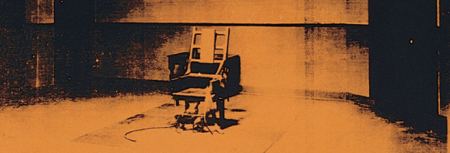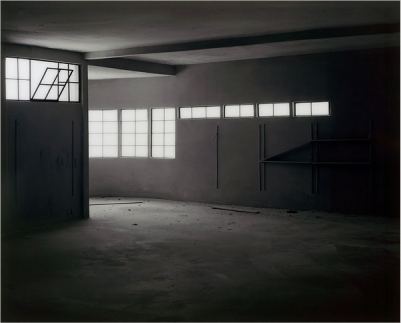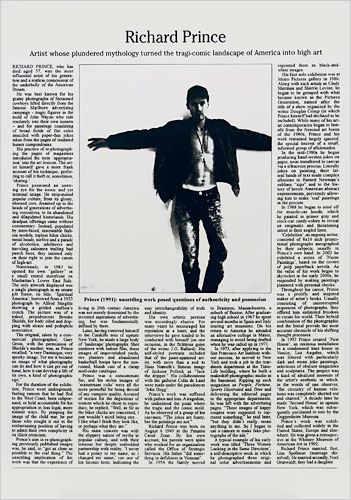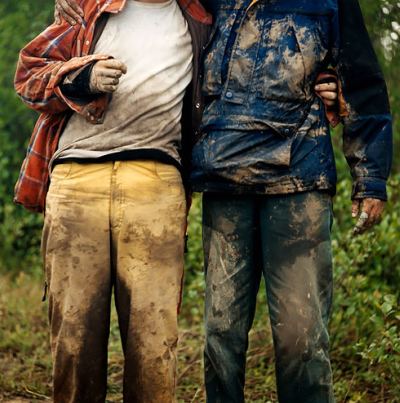Roberta Smith’s review of the Guggenheim’s Haunted: Contemporary Photography/Video/Performance was at best tepid.
The actual exhibition is for the most part routine and innocuous.
Organized by Jennifer Blessing and Nat Trotman, the museum’s curator and
associate curator of photography, it swings rather listlessly between
the arcane and the obvious, the overly familiar and the unknown, the
important and the trifling. (more)
Her real quarrel, which she addressed in her first six paragraphs, is with the catalog. Holland Cotter never does this. If he has a problem with the catalog, he mentions it in an aside and moves on. The question for any exhibit is not the support material but what’s on the walls and in the space.
The exhibit begins in the 1960s and is largely drawn from the museum’s collections. Smith notes that with a few exceptions, it doesn’t come to life until it gets past the 1980s. She singles out work from Cindy Sherman, Ana Mendieta, Christian Boltanski and Annette Messager for having a “been there, done-that predictability.”
She’s referring to excellent pieces from all of these artists. I’m reminded of music critics who call for a moratorium on Mozart. They’re sick of him, but he’s not the one who has gone stale.
Haunted opens with Andy Warhol’s Orange Disaster #5 from 1963: Fifteen shadow-smeared prints of electric chairs. Not visible in the image below is the Silence sign on the right, which serves as a kind of predictive haunting: Silence does indeed equal death.

The exhibit flows around the Guggenheim spiral, experience to experience.
How I love Anri Sala’s Nocturnes from 1999, an 11-minute video with sound I watched twice through, back to back. Two men scarred by war hobble through their lives afterward. One cares for thousands of fish, the other is addicted to video games. Their identities blur in the flash of a fin and the pinging sound of artificial explosions. The first hides his fish from the public because, he says, they cannot stand to be stared at and flee to corners where they tremble and die. In lesser hands, this could be a mess, but even when Sala’s content is heavy, his touch is light.
Born in Dachau in 1973, Janaina Tschape’s video Lacrimacorps from 2004 features the interior of a castle in Etterburg, Goethe’s summer residence that later overlooked the concentration camp of Buchenwald. Shot from above, a dancer turns in a great hall, a figure come to life from a music box, trapped in a routine beyond her choosing.
Paul Chan’s 7 Lights from 2005-07, projected on the floor, springs from a reverse gravity. The shadow of objects float down, a lyrical residue of a disaster.
In James Casebere’s Garage from 2003, light is both austere and redemptive.

Formerly an obituary writer for the Daily Telegraph, Adam McEwen writes elegiac obits of the living, such as one here, for Richard Prince from 2007, printed as if it had appeared in the New York Times. I’ve never read anything better on Prince, whose father “did something
in defoliants in Vietnam.”

Sophie Calle’s pair of large photographs from 1990 show graves with sinking headstones, one marked as “Mother,” the other “Father.”
Sarah Anne Johnson, born in Winnipeg, choreographs a survey of photographs, both straight and manipulated, with real people and puppets, to document a rite of passage from her youth – planting trees in deforested stretches of Manitoba.

There are more than 50 artists in this show. Nowhere to be found is work that earns Smith’s dismissal as trifling. None of it is.



I always enjoy the art criticism of excellent art connoisseur like Roberta Smith and You..It seems to me that you are more descriptive and Roberta is more broad.
Meh…the show is OK, but nothing earth-shattering…Smith’s problem with the catalog is apt as the pieces have little in common at times and the curators offer bizarre and unrelated explanations for their decisions…sorry, I think Roberta hit the nail on the head.
I truly agree with you. I was completely moved by this show and I think your critique of Smith is dead-on. Thank you.